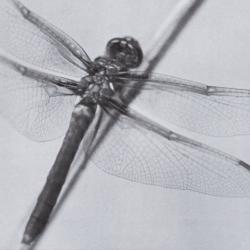Source Institutions
Source Institutions
Add to list Go to activity
Activity link broken? See if it's at the internet archive

In this outdoor activity/field trip, learners conduct experiments to explore where dragonflies and damselflies perch or rest, and how the flies change behavior in reaction to other flies or fly decoys. This activity must be done at a site such as a stream or lake where these flies gather, and offers a wonderful opportunity to see insects in nature up close and discover more about their non-flying time.
- 10 to 30 minutes
- 45 to 60 minutes
- $5 - $10 per group of students
- Ages 6 - 18
- Activity, Experiment/Lab Activity, Field Trip, Lesson/Lesson Plan
- English
Quick Guide
Materials List (per group of students)
- pipe cleaners (15 cm long)
- thin sticks (1 to 2 meters long)
- one-meter lengths of light nonofilament fishing line (4 to 6 pound test)
- flat toothpicks
- Landing Record Cards (page 5 of PDF)
- Decoy Record Cards (page 5 of PDF)
- pencils
- set of marking pens (red, blue, green, brown, black)
- roll of transparent tape
- scissors
- kitchen timer or watch with second hand
Subjects
-
Life Sciences
-
Diversity of Life
- Animals
-
Ecology
- Ecosystems
- Biodiversity
-
Diversity of Life
-
Mathematics
- Measurement
-
The Nature of Science
-
The Scientific Process
- Asking Questions
- Conducting Investigations
- Gathering Data
- Formulating Explanations
- Communicating Results
-
The Scientific Process
Informal Categories
- Animals
- Nature and Environment
- Outdoor Activity
- Physical Activity
Audience
To use this activity, learners need to:
- see
- see color
- read
- be mobile
- touch
Learning styles supported:
- Involves teamwork and communication skills
- Involves hands-on or lab activities
Other
This resource is part of:
Access Rights:
- Free access
By:
Rights:
- All rights reserved, The Regents of the University of California, 1981
